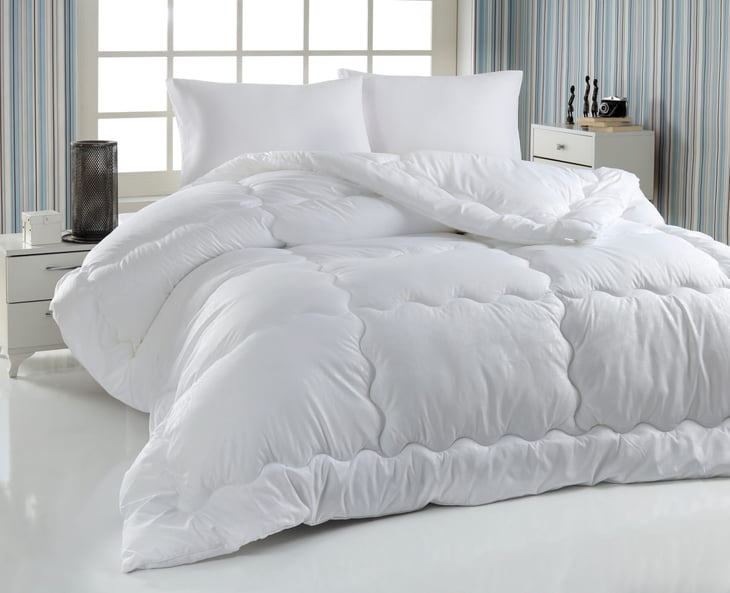
Next time you feel like moving an entire washer load straight into the dryer, don’t be too quick to toss your clothes in and walk away. Not every item of clothing can withstand a high-heat (or even a low-heat) tumble dry without shrinking, stretching or falling apart.
As if that’s not scary enough, some dryer habits could put you on the hook for an expensive dryer repair, with average repair costs ranging from $100 to $430, according to HomeAdvisor.
Installing a new dryer can run anywhere from $300 to $2,000, according to the same source. Even worse, certain items can disintegrate while drying, building up and collecting lint that blocks the flow of air, causes excessive heat to build up and creates a fire risk, warns the Consumer Product Safety Commission.
There’s no need for you to learn your dryer lessons the hard way, though. Take a tumble through the following items to keep out of your dryer.
Clothing soiled with flammable substances

Putting clothing or rags stained with flammable liquids such as gasoline, alcohol, finishing oils or other combustible substances into the dryer could cause the fabrics to catch fire inside the dryer drum, even if they’ve already been cleaned with a washing machine cycle, according to the Consumer Product Safety Commission.
Even after undergoing a wash, traces of oils and other flammable substances can remain on clothing or rags, emitting vapors that can ignite or explode in the dryer when exposed to high heat during the tumble dry cycle.
Rather than risking a house fire, the U.S. Fire Administration recommends hanging clothing that’s been soiled with flammable substances outside to dry. If you prefer, you can also hang them in a well-ventilated room, away from heat sources.
Rubber-backed bath mats

Rubber-backed bath mats can fall apart, leaving rubber and fabric pieces in the dryer and “wreaking havoc” on the dryer system, says Scott Thomas, director of services for Dryer Vent Wizard, headquartered in Irving, Texas.
“Heat causes the rubber to disintegrate, and the pieces that aren’t able to pass through the lint screen break up, going through the motor and into the vent line,” says Thomas. Meanwhile, larger chunks of rubber provide lint and other vent-clogging materials something to grab onto, creating a snowball effect that grows and grows.
The rubber on a bath mat can begin coming apart as soon as the first time you dry it and get caught in the dryer’s internal components, such as the motor, warns Craig Anderson, owner of Appliance Analysts, an online appliance care and advice resource.
“The motor is the most expensive part on a dryer to repair or replace, costing $200 and up to repair and around $500 to replace the motor for larger units,” says Anderson.
Running shoes

Popping your running shoes into the dryer to tumble dry after a rainy-day run might seem like a quick way to ready them again for the road, sidewalk or running trails. When it comes to drying running shoes, however, it’s better to resist the urge for fast results.
“Not only will your shoes get beat up as they tumble around the dryer, but the heat can also cause your shoes to shrink,” according to running and sports shoes giant Nike. “Since the perfect fit makes the difference between a supported run and a painful one, you don’t want to risk any change to the shape or fit of your shoes.” High heat can also damage glue, stitching and other shoe components that must be handled with care.
Even if you dry running shoes on low heat on a dryer rack, in a mesh bag or dangling on the inside door, “your shoes won’t last as long if you dry them in the clothes dryer,” says Nike.
Instead, Nike recommends spot cleaning running shoes first. After cleaning, unlace the shoes so they can breathe, remove insoles and stuff each shoe with crumpled newspaper to soak up water and keep their shape. You can also dry running shoes by hooking them to the grill of a floor or wall fan for a couple of hours.
Clothes containing spandex

Don’t ruin your stretchy gym clothes, bras and swim suits by tumbling them at a high heat in the dryer.
“Spandex and other elastic materials are great for wearing comfort, but they often don’t do that well in a dryer,” advises Consumer Goods company Electrolux on its blog. “The high temperatures can damage the material, breaking it down and ruining the shape of your clothes.
If you must dry clothes with Spandex quickly, Electrolux recommends drying them at the lowest temperature setting and removing the clothes while they’re still damp.
Comforters and duvets

Large comforters and duvets typically exceed the dryer capacity, forcing the dryer to work too hard and overheat, says Anderson. And repeatedly drying bulky, oversized items in a home dryer can cause the dryer to overheat and fail in as little as six months, he says.
The easiest way to tell if the dryer is overworking is if you notice a burning smell, an unusual whirring or other unusual sounds that the dryer doesn’t normally make, he says.
“If you hear anything that you think sounds strange, stop the cycle and make sure the dryer isn’t overworking,” says Anderson. Better yet, take large comforters, duvets and thick blankets to your local laundromat to be laundered in large-capacity washers and dryers.
Clothing covered in pet hair

If you regularly put clothing, blankets or bedding covered with pet hair in the clothes dryer, you could be in for a costly repair. The dryer lint screen stops only around 50% of fur and hair from going past, says Thomas.
“These materials start to build up, causing the motor to overheat,” he says. Hair and fur combined with lint can become large obstructions in the vent line, decreasing efficiency and creating a fire hazard.
“Fires can occur when lint builds up in the dryer or in the exhaust duct,” according to the Consumer Product Safety Commission. “Lint can block the flow of air, cause excessive heat build-up and result in a fire in some dryers.”
Pet hair on wet clothes can also run up your gas or electric bill by taking longer to dry. Dryers are designed to remove humidity from clothes, so if wet pet hair is clinging after being cleaned in the washing machine (also susceptible to pet hair damage) to clothes, the dryer has a harder time drying the clothes.
To be on the safe side and save money in the long run, launder clothes and blankets covered in pet hair at your local, coin-operated laundromat.





Add a Comment
Our Policy: We welcome relevant and respectful comments in order to foster healthy and informative discussions. All other comments may be removed. Comments with links are automatically held for moderation.